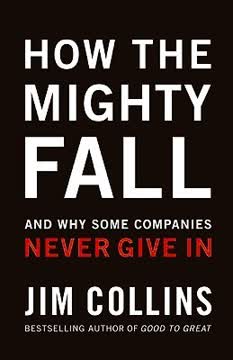Key Takeaways
1. Social Sector Greatness Requires Redefining Success Metrics
It doesn't really matter whether you can quantify your results. What matters is that you rigorously assemble evidence—quantitative or qualitative—to track your progress.
Redefining success. In the social sector, greatness isn't measured by profit but by mission fulfillment. Organizations must develop rigorous, mission-aligned metrics to gauge their performance and impact. This often requires creativity and a shift from input-focused measures (like budget allocation) to output-focused ones (like lives changed or problems solved).
Evidence-based approach. Leaders should think like scientists or trial lawyers, gathering a body of evidence to demonstrate progress. This might include:
- Qualitative feedback from beneficiaries
- Quantitative data on program outcomes
- External recognition or awards
- Comparative performance against similar organizations
The key is consistency and rigor in tracking chosen metrics over time, allowing organizations to measure improvement and drive toward greatness.
2. Level 5 Leadership: Blending Humility and Will in Diffuse Power Structures
Level 5 leadership is not about being "soft" or "nice" or purely "inclusive" or "consensus-building." The whole point of Level 5 is to make sure the right decisions happen—no matter how difficult or painful—for the long-term greatness of the institution and the achievement of its mission, independent of consensus or popularity.
Humble yet determined. Level 5 leaders in the social sector combine personal humility with an unwavering commitment to the organization's mission. They navigate complex power structures by building coalitions, using persuasion, and leveraging shared interests.
Legislative leadership. Unlike business CEOs with concentrated power, social sector leaders often operate in a "legislative" environment. This requires:
- Building consensus without compromising on core principles
- Utilizing "soft power" to influence without direct authority
- Balancing multiple stakeholder interests while staying mission-focused
- Making tough decisions that may be unpopular but serve the long-term good
Level 5 leaders in these contexts must be skilled at both executive decision-making and legislative maneuvering to drive their organizations toward greatness.
3. First Who: Prioritizing the Right People Despite Constraints
Selectivity led to credibility with donors, which increased funding, which made it possible to attract and select even more young people into the program.
Talent over resources. In the social sector, having the right people is even more critical than in business due to limited financial incentives. Organizations must focus on attracting those intrinsically motivated by the mission.
Creative recruitment and retention:
- Leverage the mission's emotional appeal to attract passionate individuals
- Create a selective process to increase perceived value of positions
- Use early assessment mechanisms to identify top performers
- Build a culture that retains high performers through non-monetary rewards
- Invest in developing people, even with limited resources
By prioritizing talent acquisition and development, social sector organizations can overcome resource constraints and build high-performing teams dedicated to the mission.
4. The Hedgehog Concept: Aligning Passion, Potential, and Resource Engine
A great organization is one that delivers superior performance and makes a distinctive impact over a long period of time.
Three-circle alignment. The Hedgehog Concept for social sectors involves finding the intersection of:
- What you're deeply passionate about
- What you can be the best in the world at
- What drives your resource engine (time, money, brand)
Resource engine focus. Unlike businesses that focus solely on profit, social sectors must consider a broader resource engine:
- Time: Attracting and retaining committed volunteers and staff
- Money: Developing sustainable funding sources
- Brand: Building emotional goodwill and mindshare with supporters
Organizations that align these elements create a clear, compelling direction that guides decision-making and resource allocation. This focus allows them to say "no" to opportunities outside their Hedgehog Concept, ensuring maximum impact in their chosen area.
5. Turning the Flywheel: Building Momentum Through Brand and Results
People want to feel the excitement of being involved in something that just flat out works.
Momentum through results. The flywheel effect in social sectors is driven by the connection between tangible results and brand reputation. As organizations deliver on their mission, they build credibility and emotional resonance with supporters.
Brand-driven flywheel:
- Deliver exceptional results aligned with mission
- Build brand reputation and emotional connection
- Attract more resources (time, money, support)
- Reinvest in organizational capacity
- Deliver even better results
This self-reinforcing cycle creates momentum, allowing organizations to overcome the challenges of inconsistent funding or changing political landscapes. By focusing on consistent excellence and mission fulfillment, social sector organizations can build a powerful brand that attracts sustained support and resources.
6. Disciplined Thought: Confronting Brutal Facts While Maintaining Faith
You must retain faith that you can prevail to greatness in the end, while retaining the discipline to confront the brutal facts of your current reality.
Balancing optimism and realism. The Stockdale Paradox is crucial for social sector leaders facing daunting challenges. It requires:
- Unwavering belief in ultimate success
- Honest acknowledgment of current difficulties
- Willingness to adapt strategies based on reality
Data-driven decision making. Leaders must:
- Gather and analyze relevant data on organizational performance
- Seek honest feedback from stakeholders and beneficiaries
- Regularly reassess strategies and tactics
- Maintain transparency about challenges and setbacks
By combining faith in the mission with a clear-eyed view of reality, social sector organizations can make informed decisions, adapt to changing circumstances, and persistently work towards their goals despite obstacles.
7. Building Pockets of Greatness: Overcoming Systemic Constraints
Greatness is not a function of circumstance. Greatness, it turns out, is largely a matter of conscious choice, and discipline.
Focus on controllables. While systemic challenges exist, social sector leaders must concentrate on creating excellence within their sphere of influence. This involves:
- Identifying areas where immediate impact is possible
- Implementing best practices regardless of external constraints
- Cultivating a culture of discipline and continuous improvement
- Celebrating and replicating small wins to build momentum
Incremental progress. By focusing on building "pockets of greatness," organizations can:
- Demonstrate what's possible despite constraints
- Attract attention and resources to successful initiatives
- Gradually influence broader systemic change
- Maintain motivation and morale in challenging environments
Leaders who refuse to be paralyzed by systemic issues and instead focus on excellence in their immediate domain can create transformative change, even in the most difficult circumstances.
8. From Good to Great: A Universal Framework for Excellence
Great business corporations share more in common with great social sector organizations than they share with mediocre businesses. And the same holds in reverse.
Cross-sector principles. The fundamental concepts of moving from good to great apply across sectors:
- Disciplined People: Level 5 leadership and getting the right people
- Disciplined Thought: Confronting brutal facts and the Hedgehog Concept
- Disciplined Action: Culture of discipline and the flywheel effect
- Building Greatness to Last: Clock building and preserving the core while stimulating progress
Adapting the framework. While the core principles remain constant, their application differs:
- Redefining success metrics beyond profit
- Navigating complex power structures
- Overcoming resource constraints
- Building a sustainable resource engine
- Leveraging brand and emotional connection
By understanding and adapting these universal principles of greatness, social sector organizations can achieve exceptional results and lasting impact, regardless of their specific mission or domain.
Last updated:
FAQ
What's "Good To Great And The Social Sectors" about?
- Purpose of the Monograph: The book is a companion piece to "Good to Great" by Jim Collins, focusing on how the principles of greatness apply to social sector organizations.
- Rejecting Business Norms: It argues against the notion that social sectors should emulate business practices, as many business norms correlate with mediocrity.
- Framework of Greatness: The book aims to build a framework of greatness applicable to both business and social sectors, emphasizing principles over practices.
- Research Methodology: It uses a matched-pair research method to compare organizations that became great with those that did not.
Why should I read "Good To Great And The Social Sectors"?
- Broadened Perspective: It offers insights into how principles of greatness can be applied beyond the business world, into social sectors like education, healthcare, and nonprofits.
- Unique Challenges: The book addresses specific challenges faced by social sector leaders, providing tailored strategies for overcoming them.
- Leadership Insights: It provides valuable lessons on leadership, particularly the concept of Level 5 Leadership, which is crucial for success in diffuse power structures.
- Practical Application: The monograph is based on real-world feedback and interviews with over 100 social sector leaders, making it highly applicable.
What are the key takeaways of "Good To Great And The Social Sectors"?
- Principles Over Practices: Greatness is defined by principles that transcend business practices, focusing on disciplined people, thought, and action.
- Level 5 Leadership: Effective leadership in social sectors often requires a blend of executive and legislative skills, emphasizing humility and professional will.
- Resource Engine: In social sectors, the economic engine is replaced by a resource engine, focusing on time, money, and brand.
- Flywheel Effect: Building momentum through consistent effort and results is crucial for achieving greatness in any organization.
How does Jim Collins define "greatness" in the social sectors?
- Mission-Driven Performance: Greatness is measured by how effectively an organization delivers on its mission, not by financial metrics.
- Outputs Over Inputs: The focus should be on achieving superior performance and making a distinctive impact, rather than merely managing resources.
- Qualitative and Quantitative Evidence: Organizations should rigorously track progress using both qualitative and quantitative evidence, even if outputs are hard to measure.
- Dynamic Process: Greatness is a continuous journey, not a destination, requiring relentless discipline and improvement.
What is the "Level 5 Leadership" concept in "Good To Great And The Social Sectors"?
- Leadership Hierarchy: Level 5 Leadership is at the top of a five-level hierarchy, characterized by a blend of personal humility and professional will.
- Legislative Leadership: In social sectors, leaders often operate within diffuse power structures, requiring skills in persuasion and coalition-building.
- Focus on Mission: Level 5 leaders prioritize the mission and cause over personal ambition, ensuring the right decisions are made for long-term success.
- Clever for the Greater Good: Leaders must be strategic and clever to navigate complex governance structures and achieve organizational goals.
How does the "Hedgehog Concept" apply to social sectors?
- Three Circles: The Hedgehog Concept involves understanding what you are passionate about, what you can be the best at, and what drives your resource engine.
- Resource Engine: In social sectors, the economic engine is replaced by a resource engine, focusing on time, money, and brand.
- Saying No: Organizations must have the discipline to say "No" to opportunities that do not align with their Hedgehog Concept.
- Sustainable Resources: The goal is to develop a sustainable resource engine that supports superior performance relative to the mission.
What is the "Flywheel Effect" in "Good To Great And The Social Sectors"?
- Building Momentum: The Flywheel Effect describes the process of building momentum through consistent effort and results, leading to a breakthrough.
- Success Breeds Support: As organizations achieve results, they attract more resources and commitment, which in turn leads to greater success.
- No Miracle Moment: Greatness is achieved through relentless effort and consistency, not through a single defining action or lucky break.
- Brand Reputation: In social sectors, brand reputation plays a crucial role in sustaining momentum and attracting support.
How does Jim Collins address the challenge of measuring success without business metrics?
- Outputs Over Inputs: Success should be measured by outputs, such as mission fulfillment and impact, rather than inputs like budget and resources.
- Qualitative Evidence: Organizations should assemble qualitative evidence, much like a trial lawyer, to track progress and assess performance.
- Consistent Assessment: The focus should be on developing a consistent and intelligent method of assessing output results, even if they defy precise measurement.
- Improvement Trajectory: Organizations should establish a baseline and rigorously track their trajectory toward audacious goals.
What are the differences between business and social sectors according to "Good To Great And The Social Sectors"?
- Economic vs. Resource Engine: In business, money is both an input and output, while in social sectors, it is only an input, with the focus on a resource engine.
- Leadership Dynamics: Social sector leaders often operate within diffuse power structures, requiring legislative leadership skills.
- Mission-Driven: Social sectors prioritize mission fulfillment over financial returns, requiring different metrics for success.
- Systemic Constraints: Social sectors face unique systemic constraints, but greatness is achieved through conscious choice and discipline.
What is the "First Who" principle in "Good To Great And The Social Sectors"?
- Right People First: Great organizations prioritize getting the right people on the bus and the wrong people off before deciding on direction.
- Early Assessment: In social sectors, early assessment mechanisms are crucial for ensuring the right people are in key positions.
- Selectivity and Passion: The process should be selective, tapping into individuals' passion for the mission, even if compensation is low.
- Talent Over Money: The right people can attract resources, but money alone cannot attract the right people.
How does Jim Collins suggest social sector organizations handle systemic constraints?
- Stockdale Paradox: Organizations must retain faith in achieving greatness while confronting the brutal facts of their current reality.
- Pockets of Greatness: Leaders should focus on creating pockets of greatness within their control, despite systemic challenges.
- Conscious Choice: Greatness is a matter of conscious choice and discipline, not a function of circumstance.
- Focus on What You Can Do: Leaders should focus on what they can do today to improve, rather than waiting for systemic changes.
What are the best quotes from "Good To Great And The Social Sectors" and what do they mean?
- "We need a new language." This quote emphasizes the need to distinguish between business and social sectors, focusing on greatness rather than business norms.
- "Greatness is not a function of circumstance." It highlights that greatness is achieved through conscious choice and discipline, not external conditions.
- "True leadership only exists if people follow when they have the freedom not to." This underscores the importance of genuine leadership, especially in social sectors with diffuse power structures.
- "The foundation for doing good is doing well." It stresses the importance of having a sustainable resource engine to effectively fulfill the mission.
Review Summary
Good to Great and the Social Sectors is praised for applying business principles to the social sector while rejecting the notion that nonprofits should simply emulate businesses. Readers appreciate Collins' insights on leadership, resource management, and measuring success in mission-driven organizations. The book's concise nature is both a strength and weakness, with some wishing for more depth. Many found it inspiring and practical for nonprofit leaders, though a few felt it lacked spiritual elements for faith-based organizations. Overall, it's considered a valuable companion to Collins' original "Good to Great" work.
Similar Books


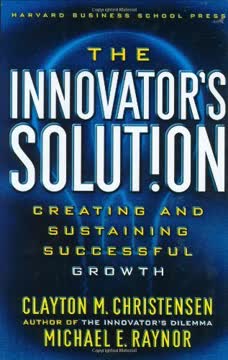
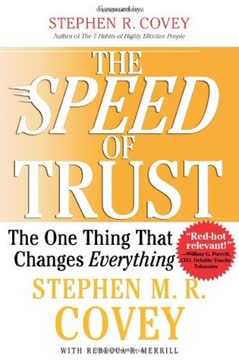
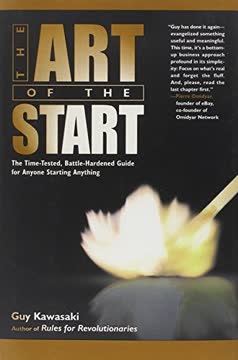
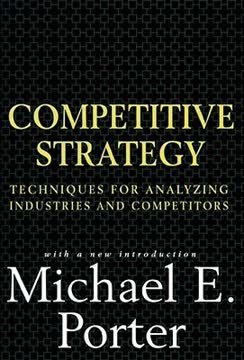




Download PDF
Download EPUB
.epub digital book format is ideal for reading ebooks on phones, tablets, and e-readers.




